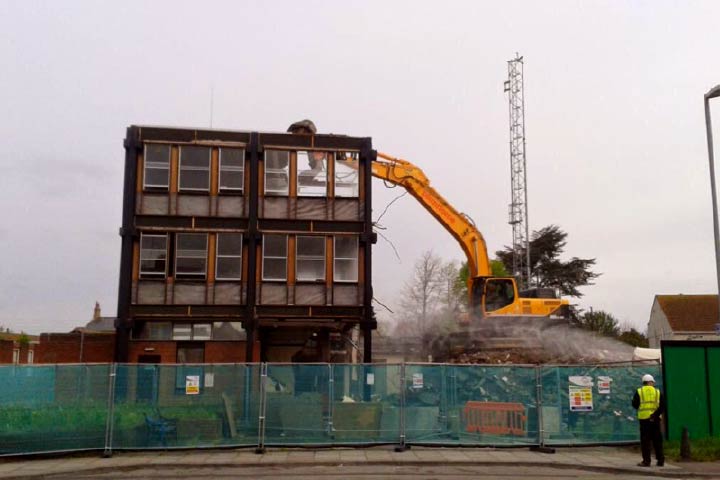When planning a commercial construction project, one of the choices you may have to make is between rehabilitating an existing facility or beginning new construction after destroying the old one. Factors such as the age of the building, whether it is a historic structure, and the requirements of the project will generally affect your choice between demolition and restoration.
What Is the Difference between Demolition and Renovation?
The primary distinction between rehabilitation and redevelopment is the project scope. Renovations often include making minor, aesthetic changes to places such as lobbies and restrooms. If you have tenants, they may typically stay in the building while it is being renovated.
On the other hand, redevelopment is a considerably larger construction project that may need demolition specialists and total property reconstruction. It is common in commercial districts when buildings need significant modernizations or additional facilities to be attractive. Tenants are often required to vacate during a renovation project.
How Does the Cost Differ between the Two Upgrades?
In many cases, remodelling a room will be less expensive than full reconstruction. Renovation may make the most sense if you contemplate a series of minor modifications that will not affect the building’s structure or need significant alterations and retrofitting work to the inside.
A structure that needs significant modifications in areas such as the HVAC system or the removal or addition of rooms and walls, on the other hand, may raise the cost of the project to the point where new construction may be preferable. While restoration may be less expensive in the short term, new construction and more efficient building materials and equipment may lower long-term costs.
The Benefit of Choosing Renovation
In addition to a lower project cost, selecting refurbishment may offer several additional advantages that make it a more valuable option for you than new construction. Renovation may be the best option to maintain the building for historic landmark status or its worth and usefulness to the community.
However, it is essential to note that a structure does not have to be designated as historical to be considered for restoration. Official landmarks are frequently well-served by restorations, but any structure with communal significance is worth maintaining. Suppose you must continue to utilise the facility while renovations are being completed. In that case, the renovation costs may surpass those of new construction owing to the increased time needed to finish the project.
The Benefit of Choosing New Construction
Upgrading an existing structure may be time-consuming and labour-intensive so that new construction may be a better option. Potential health problems caused by pollutants, toxic chemicals, and materials such as asbestos may drive up the price of a renovation, making new construction the safest choice.
One of the advantages of new construction is that you may design a structure that meets all of your requirements while being environmentally friendly, efficient, and up to date. You’ll save money on energy while also benefiting from the convenience of a building built for contemporary installations like Wi-Fi networks and solar panels.
Final Thoughts
Even if you select refurbishment over a new building, you may need the services of a local professional demolition company. Although we may demolish a structure using conventional methods, we can also do selective demolition, which involves removing different sections of the building’s interior before restoration work.
If you are looking for a commercial demolition company, Frank Smalley Demolition can be your best option! We provide various services for your construction or remodelling needs. Call us today to learn more.


